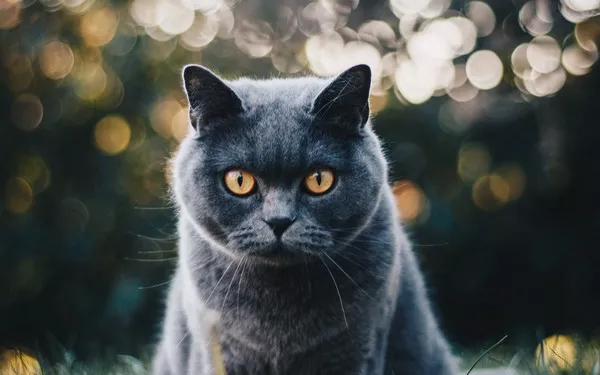Chartreux cats are known for their stunning blue coats, which contribute to their charm and allure. These captivating feline companions possess a unique genetic makeup that gives rise to their distinct coat colors. In this article, we delve into the fascinating world of Chartreux cat colors, exploring the genetic mechanisms behind their coat pigmentation and shedding light on the factors that contribute to their signature blue hue.
Genetics of Coat Color in Chartreux Cats
The coat color of Chartreux cats is determined by a complex interplay of genetic factors. Two main genes are responsible for their coat color inheritance:
Dilution Gene (D): The dilution gene is responsible for diluting the intensity of color pigment in the fur. In Chartreux cats, the dilution gene is referred to as “blue.” A cat can carry two copies of the dilution gene (homozygous) or one copy (heterozygous). Cats with two copies of the dilution gene will have a solid blue coat color, while those with one copy may exhibit variations in shading and pattern.
Agouti Gene (A): The agouti gene controls the distribution and pattern of color pigments in the fur. In Chartreux cats, the agouti gene is typically non-agouti (a), which results in a solid coat color without distinct bands or stripes. This non-agouti gene allows the blue color to be evenly distributed throughout the fur, contributing to the characteristic solid blue appearance.
These two genes, along with other modifying genes, work together to produce the unique coat color of Chartreux cats.
The Enigmatic Blue Color
The captivating blue color of Chartreux cats is the result of the combination of the dilution gene (D) and the non-agouti gene (a). The dilution gene dilutes the black pigment (eumelanin) in the fur, resulting in a blue-gray shade. This diluted pigment, when evenly distributed throughout the coat due to the non-agouti gene, gives the Chartreux cat its signature solid blue coloration.
It’s important to note that while the majority of Chartreux cats have blue coats, there may be variations in shade and intensity. Some cats may exhibit a lighter or darker blue hue, depending on the specific genetic makeup and the influence of other modifying genes.
Color Variations and Patterns
While the Chartreux breed is renowned for its solid blue coat, there are instances where variations and patterns may occur. These variations are due to the interplay of different genes and genetic factors. Some possible variations include:
Ticking: Ticking refers to the presence of small, lighter-colored hairs scattered throughout the coat. This can give the appearance of a speckled or slightly mottled pattern.
Ghost Markings: In some Chartreux cats, faint tabby markings or “ghost markings” may be visible, especially in kittens. These markings can be subtle and may fade as the cat matures.
Silver: The presence of the silver gene (in addition to the dilution and non-agouti genes) can result in a coat with a silver sheen, adding a touch of shimmer to the overall blue appearance.
It’s important to remember that while these variations may occur, they do not deviate significantly from the breed standard, and Chartreux cats are primarily recognized for their solid blue color.
Inheritance of Coat Color
The inheritance of coat color in Chartreux cats follows certain patterns:
Blue to Blue: When two Chartreux cats with solid bluecoats (homozygous for the dilution gene) are bred together, their offspring will also have solid blue coats. This is because both parents pass on a copy of the dilution gene, resulting in the offspring inheriting two copies.
Blue to Non-Blue: When a blue Chartreux cat (homozygous for the dilution gene) is bred with a non-blue cat (without the dilution gene), the offspring will carry one copy of the dilution gene, resulting in a heterozygous state. These heterozygous cats may exhibit variations in coat color, such as lighter shades of blue or even non-blue colors, depending on the genetic makeup of the non-blue parent.
Non-Blue to Non-Blue: When two non-blue Chartreux cats are bred together, their offspring will not carry the dilution gene and will not exhibit the blue coat color. Instead, they will have other coat colors typical of non-diluted Chartreux cats, such as black or gray.
It is essential for responsible breeders to carefully consider the genetic makeup of their breeding pairs to ensure the preservation of the Chartreux breed’s distinct blue coat color.
Conclusion
The enigmatic blue coat color of Chartreux cats is a result of a fascinating genetic interplay between the dilution gene (D) and the non-agouti gene (a). This combination creates a solid blue appearance that distinguishes the breed. While variations and patterns may occur, the breed standard primarily recognizes the solid blue coat.
Understanding the genetic mechanisms behind Chartreux coat color not only adds to our appreciation of these beautiful felines but also helps breeders make informed decisions when selecting breeding pairs to preserve the breed’s unique characteristics. Whether you’re captivated by their blue coats or the gentle nature of Chartreux cats, their distinct coloration contributes to their allure and charm, making them truly captivating companions for cat lovers worldwide.
Related Topics:

























